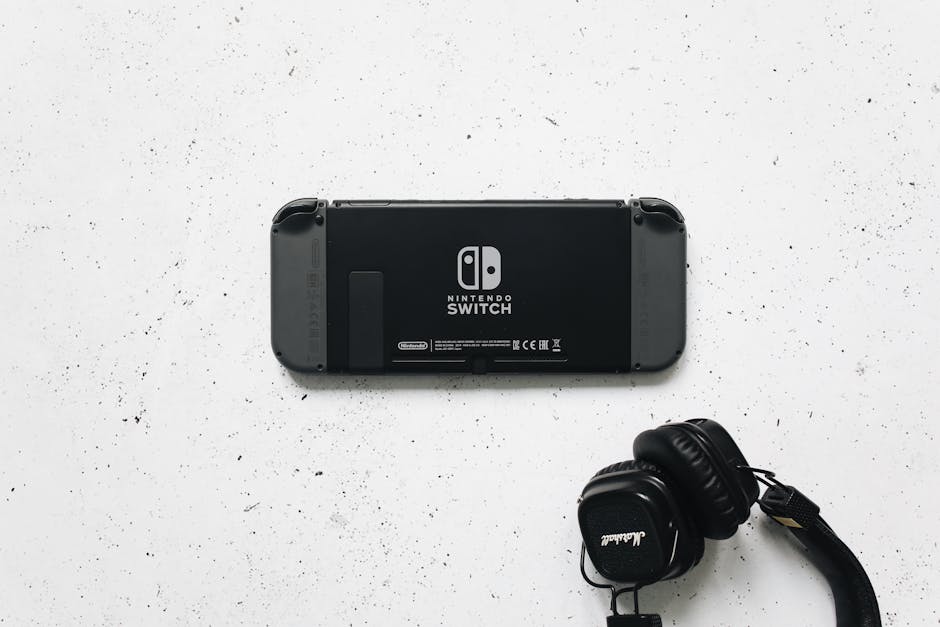Unlock the Power of Audio in Gaming: Sound Design Matters!
In the captivating world of gaming, sound design often serves as the unsung hero—yet its influence on player experience and game innovation is monumental. Have you ever felt your heart race as eerie music fades in or sighed in relief when a victory tune plays? These audio cues do more than simply fill the silence; they profoundly shape how we engage with virtual worlds. Let's explore the fascinating relationship between sound design and gaming, dissecting its historical role, present-day importance, and inventive future potential.
The Historical Context of Sound in Gaming

From the chirps of classic consoles to the rich orchestral scores of contemporary titles, sound has evolved dramatically in gaming. The earliest video games relied on simple beeps and bloops due to hardware limitations, yet even then, sound served to enhance player interactions. Titles like Pong and Space Invaders demonstrated that audio cues could indicate player success or failure, creating a feedback loop that resonated with gamers.
As technology advanced, sound design became more sophisticated, transforming into an essential element of gameplay. The 8-bit music of the NES era may now feel nostalgic, but it laid the groundwork for future innovations in audio. Today, audio designers orchestrate soundscapes that evoke emotions, build tension, and immerse players in story-rich experiences. The evolution of audio in gaming is a testament to its impact—one that is still being unraveled as new technologies emerge.
The Psychology Behind Sound Design

Why do certain sounds evoke specific emotions? The answer lies in the psychological principles governing human perception. Game audio is strategically implemented to elicit feelings ranging from anxiety to joy. Researchers have found a strong connection between sound and emotional response, tapping into various aspects of human psychology.
For example, an ominous score might heighten tension in a horror game, triggering the fear response in the player. Conversely, cheerful music signaling victory enhances feelings of satisfaction and accomplishment. By harnessing these psychological triggers, game developers can create richer, more engaging experiences. Understanding the psychology of sound design allows developers to craft audio landscapes that resonate with players, making the game feel immersive and dynamic.
Creating Immersive Experiences Through Sound

When sound design is executed brilliantly, players often forget they’re engaged with a game. Instead, they’re transported to alternate realities where every sound—footsteps crunching on gravel, birds chirping in the background, or the muffled sounds of a nearby battle—adds depth. This immersive experience is essential for modern titles; the boundary between the player and the virtual world starts to blur.
In games like The Legend of Zelda: Breath of the Wild, sound contributes significantly to exploration and storytelling. As players venture through varied landscapes, unique sounds—like the rustling of trees or distant animal calls—provide vital cues about the environment, enhancing the overall gaming experience. By paying careful attention to sound, developers can create a world that feels alive, drawing players deeper into the experience.
Modern Innovations in Sound Design

The advent of 3D audio technology and ambisonic sound has revolutionized the gaming landscape. This technology enables sound to be rendered in a three-dimensional space, allowing players to perceive audio from multiple directions, similar to real life. In games like Half-Life: Alyx, players can hear sounds coming from various directions, adding to the verisimilitude of the game world.
Moreover, artificial intelligence is beginning to play a role in sound design. AI-driven solutions can dynamically shift audio based on the player's actions or emotional state, enhancing realism and immersion. As technology continues to evolve, we can expect even more tailored audio experiences that respond to player interactions in real-time. To explore how these advancements are reshaping the industry, be sure to read this intriguing article.
Sound and Gaming Accessibility

Equally important is the role of sound design in making games more accessible. Developers are becoming increasingly aware of how audio can create inclusive gaming experiences for individuals with disabilities. By implementing features like audio descriptions and customizable sound options, games can become more approachable for players who rely on audio cues to navigate and engage with virtual worlds.
Incorporating sound effectively allows developers to cater to diverse audiences. For instance, consider creating a game where sound cues guide visually impaired players. Not just a niche market, it represents an important shift toward inclusivity. This notion of accessibility is crucial, and embracing sound design as a means to facilitate inclusivity can open doors to wider audiences.
The Future of Sound Design in Gaming

Looking ahead, the future of sound design in gaming is bright. Virtual and augmented reality are set to change how we experience audio. As we delve deeper into immersive environments, the nuances of sound will play an even bigger role in defining player experiences. By embracing cutting-edge technology, developers have the opportunity to merge sight and sound in a way that fully engulfs the player.
Moreover, the trend of procedural audio—where sound is generated algorithmically rather than pre-recorded—will revolutionize how audio is implemented in games. This innovation allows for unique sound experiences that change from playthrough to playthrough, keeping the gaming environment fresh and engaging.
The Economic Impact of Sound in Gaming

It’s essential to acknowledge that the financial consequences of sound design extend beyond mere production costs. The right audio design can significantly enhance player satisfaction, leading to increased sales and retention rates. Studies have shown that games with exceptional sound design often receive higher ratings and sell better, proving that audio is not just an afterthought but a pivotal part of the development process.
Investing in high-quality audio can yield greater returns, as sound has become an integral element in players' overall gaming experiences. Game audio can also help in marketing campaigns—attention-grabbing soundtracks or iconic audio logos can create a lasting impression, boosting a game’s visibility and brand recall.
Sound Design Beyond the Game

Interestingly, sound design's significance extends beyond the digital realm. The rise of player communities has led to an increased interest in soundscapes’ role. Players often bond over shared audio experiences, from iconic soundtracks to memorable game phrases. These connections can lead to a flourishing fan culture, which can be beneficial for developers.
Take, for example, community-driven projects that aim to recreate game soundtracks or produce fan-made remixes. This collaboration fosters a sense of belonging among players, encouraging them to engage more deeply with the original content. Games, therefore, serve as a platform for creative expression, where sound plays a crucial role in building community connection.
The Emotional Connection to Game Audio

Think back to the last game you played that left a lasting impact. Chances are, the audio played a critical role in that experience. As players, we form emotional connections with the stories we engage in, and sound is a predominant factor. The sound design in storytelling—such as haunting melodies, suspenseful scores, or even laugh tracks—shapes how we perceive characters, environments, and narratives.
In action titles like The Witcher 3: Wild Hunt, the intricate layering of various sound elements creates tension that enhances player emotions. Music swells at pivotal moments, while soft melodies resonate during quiet cutscenes, driving the narrative forward. Such emotional resonance—achieved through sound—allows players to engage with the game on a deeper level, creating memories that last long after the screen fades to black.
Sound Design in the Independent Gaming World

Interestingly, while large game studios have extensive resources for sound design, indie developers are also making waves in this realm. Many indie developers rely on innovative soundscapes to enhance storytelling within limited budgets. By creatively utilizing sound, they can evoke powerful emotions and create immersive worlds that captivate players.
A standout example is Journey, where the ambient sound design plays a central role in conveying the game's themes of solitude and companionship. Despite its minimalistic approach, the game's audio elevates the overall experience, demonstrating that powerful sound design isn't exclusive to blockbuster titles. Independent developers recognize and harness this power, challenging the big studios and inspiring creativity.
Exploring the Relationship Between Sound and Player Behavior

The intricate relationship between sound design and player behavior cannot be overlooked. Audio influences how players react to in-game stimuli and their surroundings. For example, research has indicated that players are more likely to engage in exploration when a pleasant ambiance accompanies the gameplay. This connection showcases the potential of sound design to shape player decisions.
Game developers can leverage this understanding to guide player behavior, leading to more rewarding interactions in the game world. Incorporating sound cues that prompt players to explore or engage with non-playable characters (NPCs) taps into the auditory experience, ultimately enriching the player's journey.
The Underrated Value of Silence

While sound is indeed critical to gaming, the value of silence or strategic pauses should not be overlooked. Silence can create tension, elevate moments, or amplify the impact of audio cues. By leaving space for the unexpected, developers can heighten suspense, making the eventual sound even more impactful.
A perfect illustration of this technique is found in horror games like Silent Hill, where silence permeates the haunted atmosphere. These moments of quiet amplifies the player's fear, leaving them on edge, unsure of what lurks in the shadows. The clever manipulation of sound and silence significantly enhances the player experience.
Final Thoughts

In summary, the role of sound design in gaming cannot be overstated. Sound enhances immersion, shapes emotional connections, and influences player behavior, creating a richer gaming experience. As technology continues to advance, and our understanding of the psychological aspects of sound deepens, game audio will only become more sophisticated and integral to game design.
As we move forward, embracing innovations in sound design will not only ensure engaging and immersive gameplay experiences but also foster a more inclusive gaming environment. The future holds exciting prospects for sound design, bringing forth new ways to captivate players and redefine what's possible in gaming.
For those curious about innovative audio techniques or exploring game trends that highlight the critical nature of sound design, be sure to check out this article.



